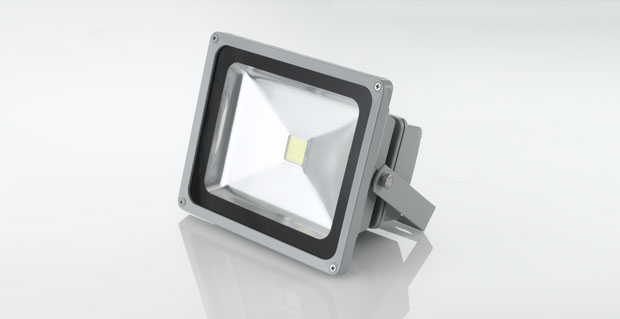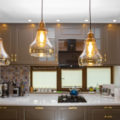Floodlighting has become an important part of security for homes and businesses alike. Whether connected to a motion detector or for use to light a garden at night, flood lighting has become an integral part of security in today’s society.
Homeowners and businesses have enough to deal with in these harsh economic times than needing to worry about changing floodlights. That’s why LED Floodlights offer the client not only an exceptional dispersion of light but also a bounty of advantages, which are only available when you use LED Floodlights.
One of the best advantages of using LED Floodlights is the life expectancy; they last for thirty times longer than standard halogen floodlights. This reveals a variety of advantages: you will have more free space as you would not need to stock up on replacement halogen bulbs. Also the main power involved in swapping out defective halogen bulbs can be time consuming and expensive, especially if running a business which requires the use of floodlighting. Thus purchasing LED Floodlights works to be extremely cost effective for the client. LED Floodlights repay your investment with longer life and an exceptional reduction in electricity costs.
With rising utility prices everyone is looking to save money. Through switching to an LED Floodlights customers will see a fall in their electricity consumption and in turn bills. The LED Floodlight will consume a significantly reduced number of watts compared to a halogen Floodlight, providing the client with an exceptional visual performance as well as low cost electricity bills. LED Floodlights feature economical illumination technology. This technology is also known as Light Emitting Diodes (LED light bulbs); this allows you to have exceptional brightness with a low power consumption.
LED Floodlights have a higher lumen output than standard Floodlights. One LED Floodlight can have the same effect as two or even three standard Floodlights. This is a staggering statistic and it means that with the longer life expectancy and the exceptional brightness less room would be needed for storing your existing halogen equivalent floodlights. It also now means that security for your home and business is now affordable and is most importantly cost effective.
It is important to note when looking to install floodlights for outside use that they are IP65 rated. This means that they have been designed and tested to withstand weather conditions and are safe for outside use. This special rating of IP65 is not to be overlooked as it is essential to the performance of the light when used outside.
Portable floodlights are also available on the market and our ideal for workers at night. By incorporating a battery to floodlights workers can experience high quality LED lighting by only consuming a fraction of the electricity of an ordinary halogen floodlight. This has many advantages such as safety for the workers as a clear bright illumination. Also these would need to be IP65 rated also as even in the most testing weather conditions the clear, crisp light will continue to emit.
This article has shown the huge benefits which LED Floodlights can give compared to their halogen equivalents. So for a more cost effective approach to lighting with better lighting results, make sure you choose LED technology when you purchase your next Floodlights.





Yes its rights Article give the huge information of benefits of the LED floodlights
Wonderful written post explaining the vital importance of LED Floodlights.
The advantages of LED flood lights are many. They are energy saving, electricity bill reducing, durable, bright and Eco-friendly – every goodness in one product.
Thanks for sharing this. I would like to add few to your list.
1. Ecologically Friendly – LED Lighting Is Much More Eco-Friendly
LED lights are free of toxic chemicals. Most conventional fluorescent lighting bulbs contain a multitude of materials like e.g mercury that are dangerous for the environment.
LED lights contain no toxic materials and are 100% recyclable, and will help you to reduce your carbon footprint by up to a third. The long operational life time span mentioned above means also that one LED light bulb can save material and production of 25 incandescent light bulbs. A big step towards a greener future!
2. Durable Quality – LED Illumination Can Withstand Rough Conditions
LEDs are extremely durable and built with sturdy components that are highly rugged and can withstand even the roughest conditions.
Because LED lights are resistant to shock, vibrations and external impacts, they make great outdoor lighting systems for rough conditions and exposure to weather, wind, rain or even external vandalism, traffic related public exposure and construction or manufacturing sites.
3. Zero UV Emissions – LED Lighting Features Close to No UV Emissions
LED illumination produces little infrared light and close to no UV emissions.
Because of this, LED lighting is highly suitable not only for goods and materials that are sensitive to heat due to the benefit of little radiated heat emission, but also for illumination of UV sensitive objects or materials such a in museums, art galleries, archeological sites etc.
4. Operational in Extremely Cold or Hot Temperatures
LED are ideal for operation under cold and low outdoor temperature settings. For fluorescent lamps, low temperatures may affect operation and present a challenge, but LED illumination operates well also in cold settings, such as for outdoor winter settings, freezer rooms etc.
5. Low-Voltage – LED Lighting Can Run on Low-Voltage Power Supply
A low-voltage power supply is sufficient for LED illumination. This makes it easy to use LED lighting also in outdoor settings, by connecting an external solar-energy source and is a big advantage when it comes to using LED technology in remote or rural areas.